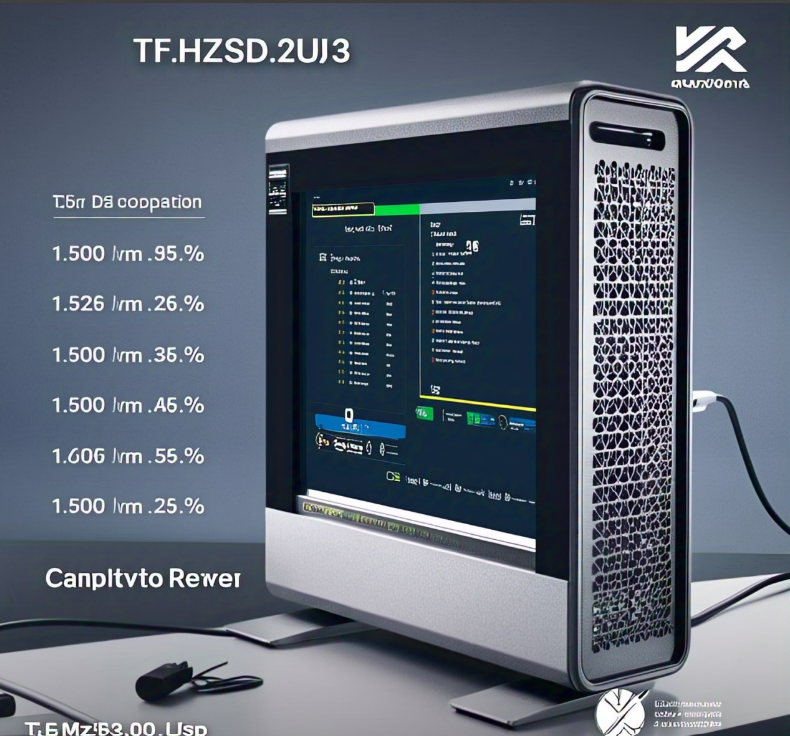Introduction to T5.HZSD5.2UJf3 Size Technology
The term T5.HZSD5.2UJf3 Size may also sound distinctly technical, but it is a critical identifier inside the global of electronics, information architecture, or custom manufacturing additives relying on its software. It is frequently used in technical documentation to outline very particular components or document systems. When engineers, IT experts, or tech analysts come upon this time period, it becomes vital to recognize what each component indicates and the way the overall “size” determines overall performance, compatibility, and integration with large structures. The naming pattern implies a coded reference which may relate to firmware, hardware unit sizing, or system indexing in high-overall performance computing or commercial era. Understanding the total scope of T5.HZSD5.2UJf3 Size can assist customers pick out the suitable configurations, troubleshoot efficaciously, and optimize machine performance. Whether you are running in enterprise statistics systems or electronics, familiarity with this term allows knowledgeable decision-making and better technical accuracy.
Decoding the T5.HZSD5.2UJf3 Size Identifier
At its middle, the T5.HZSD5.2UJf3 Size naming shape breaks down into significant segments. The “T5” may want to talk to a product era or kind collection. “HZSD5” may also denote hardware type, version, or firmware batch. Meanwhile, “2UJf3” would possibly relate to a coded configuration or series revision. Most importantly, the word “Size” represents a measurable attribute—be it physical dimensions, reminiscence ability, records duration, or network bandwidth. Manufacturers often use such identifiers to make certain customers get hold of exactly the part or software element meant for a particular use case. This degree of precision in naming conventions reduces compatibility errors and lets in structures to scale more reliably. For customers handling devices such as processors, drives, modular additives, or facts structures, understanding the precise T5.HZSD5.2UJf3 Size can save time, reduce fees, and avoid breakdowns from misaligned setups.
Applications of T5.HZSD5.2UJf3 Size in Modern Systems
The T5.HZSD5.2UJf3 Size performs a critical position in various industries consisting of cloud records management, embedded structures, IoT (Internet of Things), and aerospace technology. In cloud structures, the dimensions ought to represent bandwidth allocation or storage block definitions, which might be critical in multi-tenant environments. In embedded structures, it might dictate aspect length or statistics throughput, impacting how devices like sensors and microcontrollers communicate. For IoT gadgets, wherein physical constraints depend, length identifiers help in designing compact yet powerful modules. Additionally, in aerospace and car sectors, the T5.HZSD5.2UJf3 Size guarantees accurate element replacement and preservation cycles, wherein a mismatch may want to lead to catastrophic failure. The significant adaptability of this sizing structure showcases its engineering robustness and precision, cementing its relevance across the tech spectrum.
Compatibility and Performance with T5.HZSD5.2UJf3 Size

Choosing the proper T5.HZSD5.2UJf3 Size at once affects system overall performance. Components which are undersized or oversized can result in inefficiencies which includes facts bottlenecks, overheating, or device lags. For instance, in software environments, an incorrectly sized module may additionally cause reminiscence allocation errors or failed patches. In bodily setups like servers or circuit boards, length mismatch can impede airflow or motive set up troubles. Compatibility ensures now not simplest most appropriate overall performance however also protection and regulatory compliance. Engineers and IT specialists have to affirm length compatibility in opposition to system necessities and specifications supplied by means of companies. Most manufacturers offer particular datasheets, and referencing them before deployment prevents highly-priced revisions. Proper sizing boosts basic gadget efficiency, extending sturdiness and decreasing operational dangers in task-critical environments.
Sourcing and Specification Standards of T5.HZSD5.2UJf3 Size
When sourcing elements labeled under T5.HZSD5.2UJf3 Size, consumers need to work with authorized companies and cross-test specification standards. Inconsistent labeling from unauthorized sellers could lead to substandard or counterfeit products. Global tech production adheres to strict requirements like ISO, IEC, and JEDEC to hold sizing and compatibility throughout regions and industries. The T5.HZSD5.2UJf3 Size designation is normally observed by means of a certification or technical information sheet, outlining detailed metrics like wattage, dimensions, interface codecs, and fabric tolerances. Proper documentation guarantees engineers can combine elements into their structures with out similarly customization. It also ensures that replacements or enhancements healthy seamlessly. Buyers should additionally pay attention to firmware compatibility, as some sizes may correlate with software program versions or embedded libraries. Maintaining a repository of depended on vendors and compliance files is important to powerful size management and procurement.
Evolving Variants of the T5.HZSD5.2UJf3 Size
Technology does not remain static, and neither do identifiers like T5.HZSD5.2UJf3 Size. Over time, manufacturers launch new variants with minor or most important upgrades. These can also consist of extended capability, compact physical formats, advanced thermal tolerances, or software improvements. Identifiers may evolve to consist of “T6” or “HZSD6” to signal subsequent-gen compatibility. Tracking those adjustments is important for IT departments and OEM producers seeking to preserve compatibility across versions. Upgrades in such sizes are regularly backward-compatible, however documentation have to verify it. For software program and firmware, size enhancements may deliver new overall performance metrics like reduced latency or accelerated bandwidth. Organizations with model control systems can catalog exclusive T5.HZSD5.2UJf3 Size revisions to make certain optimal machine overall performance and decrease downtime for the duration of enhancements. Always overview changelogs and compatibility matrices while new length versions grow to be available.
Integration Strategies with T5.HZSD5.2UJf3 Size
Successful machine integration the use of T5.HZSD5.2UJf3 Size components entails a blend of hardware matching, software validation, and environmental consideration. When integrating into legacy structures, engineers should validate that bodily and logical constraints accommodate the specified size. This consists of mounting dimensions, voltage stages, thermal range, and communique protocols. Software-wise, the codebase need to understand the scale in configuration documents or system registries. Environmental factors consisting of humidity, vibration, and electromagnetic interference additionally affect length suitability. In excessive-overall performance environments like statistics facilities or manufacturing flooring, these integration elements turn out to be even extra important. Engineers often use simulation gear to model the overall performance of T5.HZSD5.2UJf3 Size elements underneath real-international conditions before real deployment. Post-integration trying out guarantees all modules operate within designated limits, imparting self assurance in long-time period operational stability.
Security Implications of T5.HZSD5.2UJf3 Size
Security is an often-disregarded element of component sizing like T5.HZSD5.2UJf3 Size. In the area of firmware and embedded systems, sure sizes might also correspond to particular encryption modules, reminiscence areas, or secure boot regions. Using unauthorized or incorrectly sized components can result in vulnerabilities that cyber attackers may additionally take advantage of. Ensuring the proper length facilitates keep facts integrity and system authentication protocols. Security frameworks like TPM (Trusted Platform Module) or stable detail chips depend on very specific component sizes and mappings, and deviating from that creates potential breaches. Organizations need to maintain a stable supply chain, confirming size verification thru digitally signed certifications. Additionally, firmware updates have to be tested in opposition to the supposed T5.HZSD5.2UJf3 Size modules to prevent crashes or bricking of devices. Secure sizing supports basic device trustworthiness, in particular in critical infrastructure and finance sectors.
Troubleshooting Common T5.HZSD5.2UJf3 Size Issues
Even with precise planning, users can also come across demanding situations with T5.HZSD5.2UJf3 Size components. Common troubles include boot disasters, hardware non-detection, overheating, and information mismatches. These generally stem from length incompatibility, wrong set up, or previous software. To clear up such troubles, technicians need to first isolate whether the difficulty lies in physical size or logical size mapping. Tools together with gadget log analyzers, BIOS/UEFI checkers, and hardware diagnostics can become aware of root reasons. If a T5.HZSD5.2UJf3 Size part is inflicting ordinary disasters, it’s smart to move-verify with the authentic producer’s documentation. Additionally, forums and expert groups regularly spotlight recognised troubles with certain length series and offer patch solutions or configuration tweaks. A particular audit of set up and upkeep protocols can assist limit the danger of future troubles, making sure that structures maintain to feature easily with the specified sizing structure.
The Future of T5.HZSD5.2UJf3 Size and Smart Tech Adaptation
The technology world is shifting closer to smarter, extra adaptive structures, and the evolution of T5.HZSD5.2UJf3 Size aligns with this trend. Future programs may encompass dynamic resizing primarily based on AI-based optimization, self-correcting modules, or blockchain-based totally size verification for important infrastructure. With growing call for for automation, far flung diagnostics, and cloud integration, thing sizing will not be static—it’s going to adapt in actual-time to performance masses and predictive analysis. This will revolutionize how sizing like T5.HZSD5.2UJf3 Size is perceived, making it now not only a specification but a responsive attribute. As builders and engineers embrace modular and scalable layout standards, knowing the abilties and evolution direction of sizing nomenclature will be valuable to innovation. Businesses making an investment in adaptive generation structures ought to start by using know-how and leveraging sizing identifiers to stay aggressive in a information-driven, AI-augmented destiny.
Key Takeaways on T5.HZSD5.2UJf3 Size
- T5.HZSD5.2UJf3 Size is a unique identifier used for hardware or software configuration.
- It ensures compatibility, performance, and security in various systems.
- Used across cloud systems, IoT, aerospace, and embedded tech industries.
- Sizing helps streamline sourcing, integration, and system upgrades.
- Future trends point toward dynamic and intelligent size management.
Conclusion
The T5.HZSD5.2UJf3 Size is greater than just a cryptic string—it’s a unique technological language that ensures synchronization between additives, structures, and environments. Its importance stretches across various sectors from IT infrastructure to embedded electronics, emphasizing the significance of accurate sizing for operational success. A deep knowledge of this identifier aids in procurement, device design, chance mitigation, and destiny making plans. As industries evolve and structures turn out to be more interconnected, the capacity to interpret and adapt to sizing systems like T5.HZSD5.2UJf3 Size will play a essential role in shaping reliable and scalable technological landscapes. Engineers, builders, and IT experts alike should combine sizing understanding into their middle competency to live ahead inside the ever-advancing tech surroundings.
Frequently Asked Questions (FAQs)
1. What does T5.HZSD5.2UJf3 Size represent in technology?
It is a technical identifier used to denote specific configurations, component sizes, or software attributes within systems, aiding in compatibility and functionality.
2. How do I determine if T5.HZSD5.2UJf3 Size is compatible with my system?
Check the technical datasheet from the manufacturer, and compare it with your system’s physical, software, and environmental specifications.
3. Can T5.HZSD5.2UJf3 Size components be upgraded?
Yes, but it depends on backward compatibility. Always refer to the latest manufacturer documentation for guidance on compatible upgrades.
4. What industries typically use T5.HZSD5.2UJf3 Size designations?
Industries like aerospace, IT infrastructure, embedded systems, and IoT frequently use this kind of sizing for precision and performance optimization.
5. Are there security risks if I use the wrong T5.HZSD5.2UJf3 Size component?
Yes. Incorrect sizing can expose systems to vulnerabilities, performance failures, and potential hardware damage. Always use verified and authorized components.
